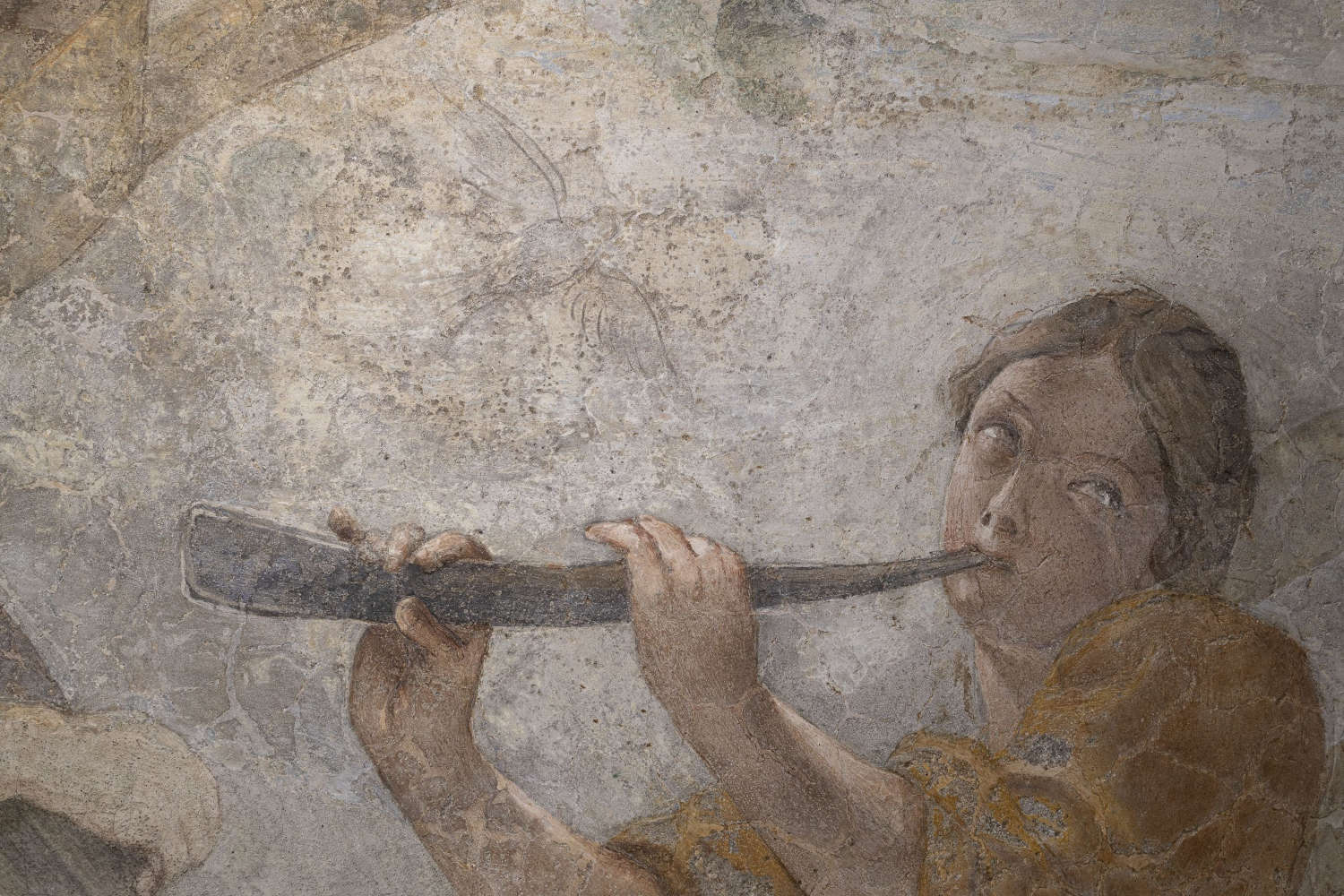Rome, Rain Nymphaeum restored and reopened to the public
The restoration of the Nymphaeum of the Rain in the Horti Farnesiani on the Palatine, one of the most significant testimonies to Roman culture of the late Renaissance and Baroque periods, was presented in Rome by the Colosseum Archaeological Park. Situated in the heart of what were among the most celebrated aristocratic gardens in Europe, the Nymphaeum, designed in its present form by Girolamo Rainaldi (Rome, 1570 - 1655), was a space that, inspired by examples fromancient Rome and the early Renaissance, was used by the Farnese family, especially in the warm season, as a space for feasting and pleasure. Gathered discreetly in a large semi-subterranean room decorated with frescoes and ancient sculptures, the Nymphaeum’s guests could enjoy the refreshing penumbra and the melodious resonance of the Rain Fountain, contrived to reproduce the natural oozing of water from the sky.
Closed to the public for many decades for conservation reasons, the Nymphaeum of the Rain has been the subject of a major restoration and enhancement project by the Colosseum Archaeological Park, which began in 2020 and will be completed in 2023. The restoration project, explained Alfonsina Russo, director of the Colosseum Archaeological Park, “involved solving the complicated problem of water infiltration that affected the walls of the Nymphaeum, the consolidation and restoration of the entire structure. It was a long and difficult work, for which different professionals were involved and which only thanks to the synergy of all it was possible to complete.”
As part of the project, special effort was devoted to the philological recovery of the Rain Fountain and all the interior surfaces decorated in fresco and stucco, an effort that led to important scientific results.
As Roberta Alteri, project manager, recounts, “the Rain Fountain has been restored to its original appearance, with its hydraulic play of seven metal basins of different sizes and its faux stalactite decorations. The restoration of the frescoes has allowed the integral recovery of the still-preserved pictorial texts, which new archival research attributes to the hand of Modanino, an interesting Baroque figure still little known to scholars.”
The integral reinterpretation of the frescoes, added Director Russo, “now allows us to understand well what the original function of the Nymphaeum and its uses were: a space illusorily conceived as a pergola in a garden, animated by music and songs, poetry and cultured conversations in the shadow of the ancients and nature simulated thanks to the artifices of architecture.”
The restoration project was preceded and accompanied by studies and research aimed at philologically supporting the conservation interventions and reconstructing the more general historical and cultural context of the Rain Nymphaeum, with its material and immaterial cultural values. The results of the research are communicated to the public in different ways and at different times.
Now the Park intends to make the results of the restoration and this “forgotten” monument of the Roman Baroque known to all. In conjunction with the reopening of the Rain Nymphaeum, there will also be a “Baroque Feast,” an event (an original production of the Colosseum Archaeological Park, which thus wants to experiment with new forms of heritage enhancement) that intends to evoke the ephemerality of court life of the time, through the synergy of the arts: music, words, images, sounds.
Finally, in December 2023 (Dec. 13-15), as a culmination of this project, the Park will organize an international conference dedicated to Ancient and Modern Nymphaea in Rome and Latium, involving Italian and foreign scholars and much new research, and an exhibition (Farnese Splendors, Dec. 12-Apr. 7) that will tell the general public the history of the Horti Farnesiani from the particular perspective of immaterial culture, reconstructing with works of art and multimedia apparatus the atmospheres of feasting, banqueting and botanical and zoological culture of the seventeenth century.





 |
| Rome, Rain Nymphaeum restored and reopened to the public |
Warning: the translation into English of the original Italian article was created using automatic tools. We undertake to review all articles, but we do not guarantee the total absence of inaccuracies in the translation due to the program. You can find the original by clicking on the ITA button. If you find any mistake,please contact us.



























